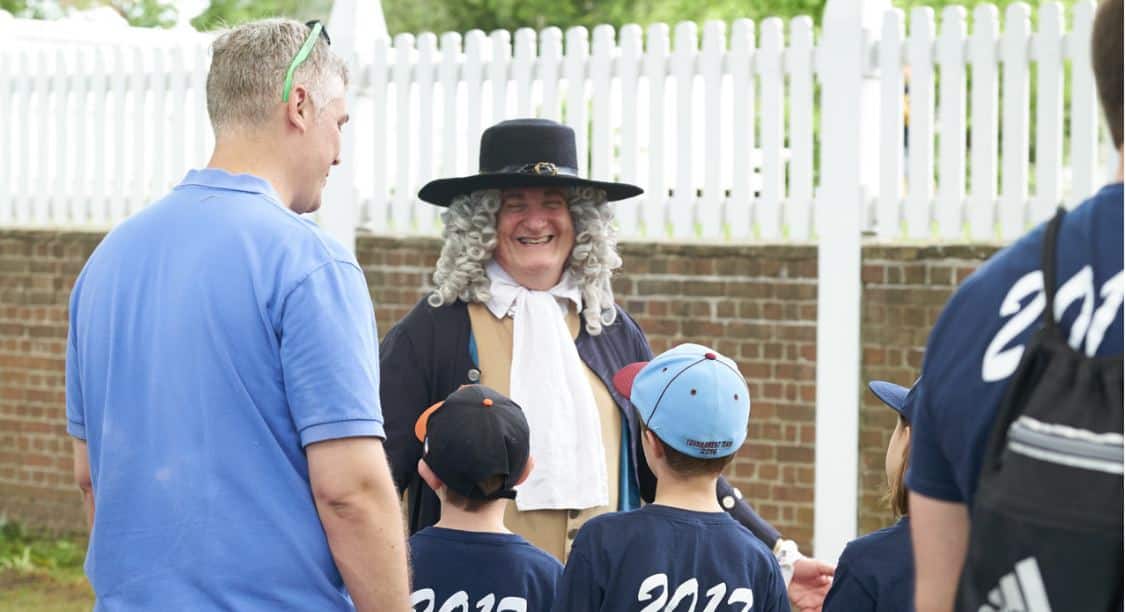
For reservations to experience “nkwiluntàmën: I long for it; I am lonesome for it (such as the sound of a drum)” by Indigenous artist Nathan Young, please go to https://nkwiluntamen.com/
Biography
William Penn spent a total of 4 years in America – that’s all! So what was he doing the other 70 years of his life?
Young Aristocrat
When Penn was born in 1644, his homeland was in the midst of England’s Civil War. Penn’s father was a “royalist” who staunchly supported King Charles I. Although the royalists lost the war (and the King was beheaded in 1649), William’s father, an Admiral in the Navy, was able to keep his land and his money. In 1660, when Penn was 16 years old, England’s monarchy returned. Charles II, the son of Charles I, was grateful to Admiral Penn for his loyalty. The Admiral supported the new king by using his personal wealth to rebuild the navy. Charles II owed Admiral Penn a huge debt. Penn, therefore, grew up wealthy but with a keen awareness of the events and politics swirling around him.
Quaker Spokesman
In 1666 while in Ireland, the 22 year old young aristocrat managed his father’s estate and participated in militia action against Irish rebels. But when he heard a Quaker preacher, the course of his life changed forever as he accepted Quaker doctrine as his own. The Quaker faith, in turn, would never be the same once Penn contributed his immense talent, energy, connections, and money.
England during this period saw the rise of many new religious groups at the same time that it outlawed any religion other than The Church of England. Penn’s position in society did not spare him religious persecution and jail time. Undaunted, Penn wrote copious religious books, tracts, and letters which challenged the thinking of the time as well as solidifying Quaker thought and practice.
Accused of “inciting a riot” in 1672, Penn found himself in the midst of a court trial that challenged the roles of judge and jury. The Penn-Meade Trial changed England’s court system.
Penn’s involvement in Quaker business extended to assisting in the development of two Quaker colonies in America: East Jersey and West Jersey. From England, Penn shaped their governments and actions.
Optimistic Proprietor
In 1680, Penn approached King Charles II to collect on the debt the King owed the now deceased Admiral Penn. Penn requested land in America where he envisioned a colony that would become “the seed of a nation.” Penn wanted to design a colony and a government that would showcase his ideals.
Once Penn became the proprietor of Pennsylvania in 1681, things began to happen very quickly. William Markham, Penn’s cousin and a surveyor, was sent to the new colony to lay out the city of Philadelphia per Penn’s instructions. The city was built on a grid pattern with squares set aside for open space — a “greene country towne that will never be burnt or…”
Markham was also responsible for choosing the site of Penn’s personal estate, Pennsbury Manor. But it was Penn himself, arriving in Pennsylvania in 1682, who oversaw construction of his new home and wrote numerous letters describing what he wanted.
But perhaps Penn’s greatest achievement was the development of a government that included representation of the people, religious and ethnic tolerance, and a fair judicial system that confirmed the role of juries in trials.
Penn also navigated a peaceful relationship with the Lenape (Native Americans) in the area. Paying for land, inclusion in the jury system, and learning their language were just a few of the ways Penn approached and solicited the cooperation of the Lenape.
In 1684, Penn’s argument with Lord Baltimore over Pennsylvania’s boundary reached an impasse. Penn returned to England to present his case to the king. Penn only intended to stay for a few months, but it would be 15 years until he returned to Philadelphia.
Disillusioned Leader
Penn’s return to England came at a critical moment in England’s history. Charles II died, and James II became the new King. An old friend, James was very interested in Penn’s ideas of religious tolerance, and Penn became an advisor to the King. But within a few years, James was deposed. To the new monarchs, William and Mary, Penn was a traitor and imprisoned in the Tower of London.
Finally released from prison, Penn returned home to mounting problems: He was in debt, his wife became ill and died, and his son Springett (one of three surviving children) died at age 21.
In 1699, the newly re-married Penn returned to Pennsylvania with his wife Hannah, and his daughter Letitia. Shortly after arriving in America, Hannah gave birth to her first child, John.
After a 15 year absence, Penn’s return to Pennsylvania was not smooth. The government he created was running independently of his involvement. Furthermore, the members of the Assembly wanted even more influence. Penn reluctantly wrote a new frame of Government, The Charter of Privileges, which gave unprecedented power to the people to choose their own leaders and make their own laws.
England’s politics required another ocean voyage, and Penn and his family left Pennsylvania for the last time in November of 1701, never to return. Debt and a series of strokes plagued Penn in his final years before his death in 1718.
